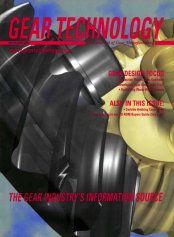The gear industry, like any other, is constantly changing. Companies vie for customers, resources, employees and time. They come, go and shuffle for position. Usually, the changes are small, affecting only a few companies. But sometimes, many changes happen at once, and when those changes are large, it can seem as though an earthquake has struck and transformed the landscape of the industry.
